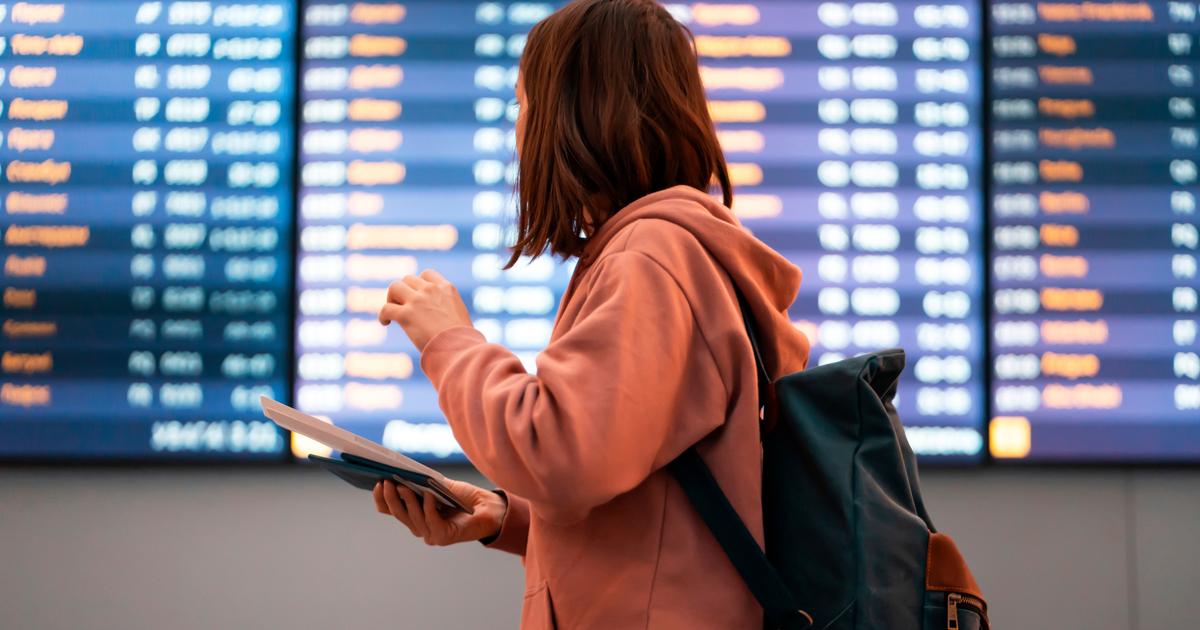Note to readers: EL PAÍS offers the Future Planet section for its daily and global informative contribution on the 2030 Agenda. If you want to support our journalism,
subscribe here.
Kenya is building a railway line connecting the coastal port of Mombasa and the interior of the country.
It is scheduled to end in Malaba, a border town with Uganda, and to link with other railway lines under construction in East Africa.
It is known locally as standard gauge railway: Standard Gauge Railway (SGR).
More information
Young Africans have a message for Europe: help us take care of the planet
Achim Steiner: "If we don't act now, history books will write about our failure"
The stories of those who are the jungle itself: the Baka of Cameroon
The passenger and freight rail line is one of the largest infrastructure investments in Kenya's history.
Construction began in 2014 at an estimated cost of $ 3.8 billion, 90% of which came from a loan from the Export-Import Bank (Exim) of China and 10% from the Kenyan government.
Although the actual area affected by the railroad is small, there are elevated parts and it traverses a wide range of ecologically fragile and important ecosystems in the country.
For example, the Tsavo Conservation Area, which is home to around 40% of Kenya's elephant population, and the Nairobi National Park.
It also passes through grazing lands in the south of the country, which are vulnerable to the effects of climate and changes in land use.
My colleagues and I conducted a study to find out all the impacts that the railroad has on the environment.
Construction is taking place in three phases.
The first two (already completed) cover 610 kilometers, and the third is yet to be completed.
Our study focused on the entire completed stretch, spanning eight counties from Mombasa to Narok.
The line runs through the Tsavo Conservation Area, which is home to around 40% of Kenya's elephant population
The project involves many stakeholders, including various levels of government (such as the National Environmental Management Authority and the Kenya Wildlife Service), local communities, civil society organizations and the private sector.
For our study, we organized group interviews and meetings with 54 key informants from all these sectors.
We found that the construction and operation of the railways have degraded, fragmented and destroyed key ecosystems.
Soil erosion, land degradation, flooding and habitat destruction increased.
They also affected the bodies of water and the movement of fauna.
Environmental impact assessments were carried out for the railway following an international standard.
The final reports, which included recommendations, were written to facilitate licensing by the National Environmental Management Authority, the government's regulatory body.
However, it has become clear that the recommendations were not fully implemented.
Several observers pointed to lack of funding, technical capacity and political interference as some of the obstacles.
The project proponents must develop measures that adequately mitigate the main ecosystem challenges and ensure their compliance.
Map of the new rail corridor in Kenya The Converstion
Impact on soils
Participants in our study noted that the railway line had an impact on soil, water and air pollution during the construction and operation of the line.
During construction, the earth was compacted and excavated.
He also moved from place to place to build embankments.
This has many effects on the environment.
For example, officials from the Community Forestry Association (around Mombasa's coastal mangroves) observed that sediments, eroded by road embankments, affected streams and plants.
They said that "not only did it affect the development of mangrove seeds and their self-germination, but it also blocked streams and reduced their size."
Another challenge was the construction of underpasses to allow circulation under the railway.
This is because the railroad is elevated.
But these underpasses redirected surface waters and rain courses.
Respondents from Narok County noted that this led to erosion, leading to sedimentation of water sources, including Lake Magadi, a unique alkaline and saline lake that is surrounded by wildlife and is a major source of trona, a sodium carbonate compound that turns into soda ash or baking soda.
The floods have been a major challenge.
To avoid cutting the railroad embankments, contractors diverted natural surface water flows
Another impact was the blasting of land to obtain construction material.
Communities around Nairobi said this caused tremors that sometimes caused buildings to crack.
Floods
The floods have been a major challenge.
To avoid cutting the railroad embankments, contractors diverted natural surface water flows (such as streams) into underpasses.
But this caused the volume and velocity of the water flow to increase, which caused flooding and soil erosion.
Added to this was the removal of the surrounding vegetation, which previously held back the water.
In Voi, county officials explained how stormwater flooded low-lying homes and farms during heavy rains.
In addition, sediments from the construction have caused the blocking or drying of rivers, especially the Empakashe and Mbagathi rivers, around Nairobi.
Most of the communities in these areas depend on rivers for domestic consumption, watering livestock, and irrigated agriculture.
An aerial view of a train on the Standard Gauge Railway in Kimuka.THOMAS MUKOYA / Reuters
Contamination
Another cause for concern was oil spills.
These occurred due to fuel transportation accidents and due to train maintenance activities.
For example, local officials in Kibwezi County claimed that an oil spill contaminated the River Thange.
Now the river cannot be used for irrigation or for domestic purposes.
Land in the affected area remains unsafe for cultivation.
Noise pollution was also reported during the construction and operation of the railway, especially in the Nairobi and Voi areas.
Some communities were unable to sleep and classes in schools were disrupted by noise levels.
Dust contamination was an additional challenge.
There are medical reports of coughing and chest pain.
Communities that depend on wetlands and rivers in the Voi, Kibwezi, Tuala and Narok areas have lost access to some critical resources and the long-term prospects are confusing for them.
An additional impact of the railroad was the appearance of illegal activities, such as grazing in protected areas.
Kenya Wildlife Service officials noted that local communities were using the underpasses to move their livestock into Tsavo National Park, especially around the Buchuma gate.
Livestock raids caused severe soil degradation in the southern part of Tsavo East.
Animals
Wildlife was also affected.
About 120 kilometers of the line runs through a key wildlife area, Tsavo National Park, in Kenya.
We observed that the elephants showed early signs of behavior modification.
Among them, aggressiveness and rejection of the railroad zone.
This is consistent with the behavioral adaptations observed in other species that change their areas of spread or alter their movement patterns due to infrastructures.
Photo: trapped young bull #elephant between the SGR #railway & fence line on May 2017 in #Tsavo, showing some of the immense challenges for wildlife due to the expanding "human footprint."
The fence line needs further thought, to avoid harm to elephants https://t.co/QlDRFp3LG3 pic.twitter.com/yoUs59a43F
- Biodiversityloss (@BiodiversitySoS) March 2, 2018
To do?
Linear infrastructure projects such as rail must apply sustainable and ecologically sensitive measures to mitigate these impacts.
For example, underpasses must be of adequate density and size.
At present, these are scarce and are located in areas not normally used by fauna.
In addition, water courses must be channeled and redirected to avoid flooding.
Furthermore, another full assessment, with the participation of all interested parties, of the environmental impacts of the railway lines is necessary.
This is essential to design a sustainable railway.
It must ensure that development benefits are maximized and ecosystem impacts are minimized.
Tobias Nyumba
is a postdoctoral researcher at the University of Nairobi.
This article was originally published in
English
and translated with the collaboration of Casa África.
Translation: Luis A. Carrascosa Cantizano.
FUTURE PLANET can follow on
,
and
, and subscribe
here
to our 'newsletter'
.




/cloudfront-eu-central-1.images.arcpublishing.com/prisa/RSVSTQFDNZHWVNNUYWZ2MAMOUE.JPG)



